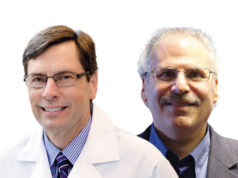
Long-term overall survival (OS) and amputation-free survival (AFS) are outcomes that rebound in claudicants who quit smoking prior to elective surgery—and they mirror those of never smokers. But patients who don’t kick the habit have significantly worse outcomes, lighting up the question: should stubbing out for good be “a requirement” before intervention?
That was the message from Rohini J. Patel, MD, who presented data during the William J. von Liebig Forum at VAM 2023 on long-term outcomes in the smoking claudicant after elective lower extremity bypass. The findings were published simultaneously in the Journal of Vascular Surgery (JVS).
Patel, a general surgery resident physician at the University of San Diego, San Diego, California, noted that patients and vascular specialists must grasp that structured smoking cessation should be a more prominent part of vascular office visits before and after lower extremity bypass and can “even be considered a requirement prior to elective procedures in claudicants”, a group that represents a unique non-emergent vascular patient population that can require lower extremity bypass.
Smoking is known to increase complications, including poor wound healing and coagulation abnormalities, and have cardiac and pulmonary ramifications, said Patel. “Across specialties, elective surgical procedures are commonly denied to active smokers. Given the base population of active smokers with vascular disease, smoking cessation is encouraged but is not required the way it is in general surgery,” she explained.
The research team queried the Vascular Quality Initiative Vascular Implant Surveillance and Interventional Outcomes Network (VISION) database over a 16-year period to tackle the question of how actively smoking claudicants fare after elective lower extremity bypass. They then carried out two separate propensity score matches on patient records that included 609 (10%) never smokers, 3,388 (55.3%) former smokers, and 2,123 (34.7%) current smokers who underwent bypass for claudication. One analysis examined the outcomes of former smokers and compared these to outcomes achieved in patients who had never smoked. The second analysis contrasted outcomes between current smokers and former smokers. The primary outcome measures included five-year OS, limb salvage (LS), freedom from target lesion reintervention (FTR) and AFS.
Health gains don’t shift unless claudicants quit smoking
There were no differences recorded with respect to any of these measures between 497 well-matched pairs of former smokers and those who had never smoked. The second analysis, which focused on ascertaining outcome differences between 1,451 well-matched pairs of current and former smokers, found that there was no difference in LS or FTR, but revealed “a significant increase in OS and AFS” in former smokers compared with current smokers, suggesting that giving up smoking reaps rewards in terms of both limb and life preservation.
“Our study found that former smokers have better OS and AFS when compared to current smokers, while former smokers mimic never smokers at five-year outcomes for OS, LS, FTR and AFS,” Patel averred.
Patel states: “This study emphasizes that we as providers must spend more time and effort working with patients to quit smoking prior to elective lower extremity bypass in claudicants.”
Limitations of the study include that the database contained no information on the duration or intensity of smoking among the study population, and there were no available data on the rate of recidivism or the cause of death among those studied.
According to senior author Mahmoud Malas, MD, chief of Vascular and Endovascular Surgery at UCSD: “Previous studies have shown that smoking cessation might not necessarily affect an immediate outcome in patients. We have found through this VISION database that even quitting one month prior to surgical intervention can change long-term outcomes. Former smokers do better than current smokers and former smokers mimic the results of patients who have never smoked. As vascular surgeons, we need to play a more active role in these discussions with patients in the clinic.”
In discussion that followed the presentation, Patel was asked to comment on whether she felt that the length of time from smoking cessation could be an additional avenue of study, in particular if that information could be conveyed to patients to arrive at a specific length of time that may confer a benefit.
“We just looked at the actual smoking status,” responded Patel, adding that if this could be linked to variables such as days since patients have quit smoking “that would be a great next step to see if there are some intervals such as six or eight weeks that provide the best drop off”.
Patel was also asked when smoking status should play a role in advising patients that they simply cannot undergo surgery. “With my general surgery residency training, I was used to telling patients that we would not operate on them for elective cases and so I wanted to look at this in the vascular world,” she responded. “I thought that claudicants represented a good population that could be intervened on because they don’t have acute limb ischemia and their life versus limb moment is not right now.
“If I was a practicing vascular surgeon and I could decide—I would really try to get my patient to try to stop smoking, wait at least 30 days, maybe do a nicotine test in preop and see if they did actually stop smoking before doing an elective bypass.”












